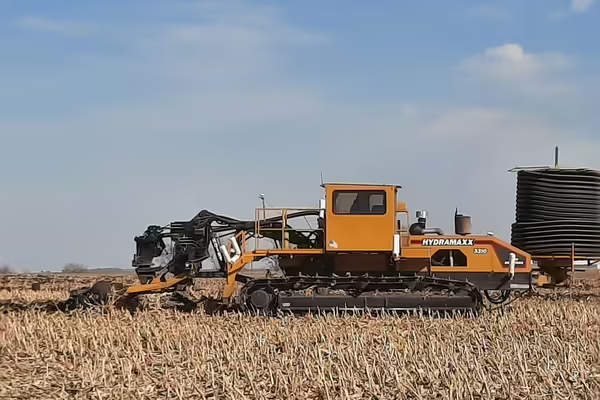
HAVANA, Ill. - Central Illinois crop production began mid-1800s as settlers started draining the swampy prairie land. They were not able to grow crops due to excess water in the soils. As drainage tile installation methods improved, more and more land was drained. Over time, however, original drainage systems can deteriorate and new drainage technologies can offer added benefit. University of Illinois Extension Farm Business Management and Marketing Educator Kevin Brooks is working on a farm drainage case study research project to help farmers and landowners make informed decisions on potential improvements to their aging drainage systems.
“If a field has excess water, we know plant roots are going to be effected and thus so will the potential yield,” Brooks explained. “In this case study, I looked at data from nine farm fields, examining yield results before and after new tiles were installed (both large main tiles and the smaller lateral tiles) and comparing the case study farms against county averages.”
The data comparison shows the study farms have substantially improved yields. “Corn averaged over 10 percent higher yields during the first three years following the drainage improvements. However, the fourth year resulted in improvements from 20 to 35 percent on corn. In the end, it appears that corn yield improvements are more substantial when higher levels of management are added to the equation, including more minute improvements to drainage and possibly tillage methods to improve soil health. We will be studying this project over time to achieve more concrete conclusions. We weren’t expecting this large of an increase. What is apparent is drainage can have a big positive impact on profitability.”
The results were checked against nearby fields. Though soybean yield improvements were slightly less dramatic, soybean yields in controlled check soybean fields didn’t show as much consistency.
“The research continues as I analyze 25 years of yield data, as well as take into account the data we will get on future crop production,” Brooks continued. “Other variables that come into play in a research study like this one include rainfall patterns and the timing of planting. We also need to dive more deeply into the local effect on area soybean fields not located in the watershed drained by the tile.”
The results of this initial case study are similar to recent findings by Purdue University with significant yield improvement in corn and lesser impact in soybeans. This ongoing study will help landowners and farmers make informed decisions on investing in drainage tile in Fulton, Mason, Peoria, and Tazewell counties.
PHOTO CAPTION
Installing drain tiles in a field comes with initial expense, but data shows that the improved crop yield can pay for the project in a short period of time. Kevin Brooks, Farm Business Manager and Marketing educator is working on a farm drainage case study to present the data representing local farm operations.
University of Illinois Extension develops educational programs, extends knowledge, and builds partnerships to support people, communities, and their environments as part of the state's land-grant institution. Extension serves as the leading public outreach effort for University of Illinois Urbana-Champaign and the College of Agricultural, Consumer and Environmental Sciences in all 102 Illinois counties through a network of 27 multi-county units and over 700 staff statewide. Extension’s mission is responsive to eight strategic priorities — community, economy, environment, food and agriculture, health, partnerships, technology and discovery, and workforce excellence — that are served through six program areas — 4-H youth development, agriculture and agribusiness, community and economic development, family and consumer science, integrated health disparities, and natural resources, environment, and energy.